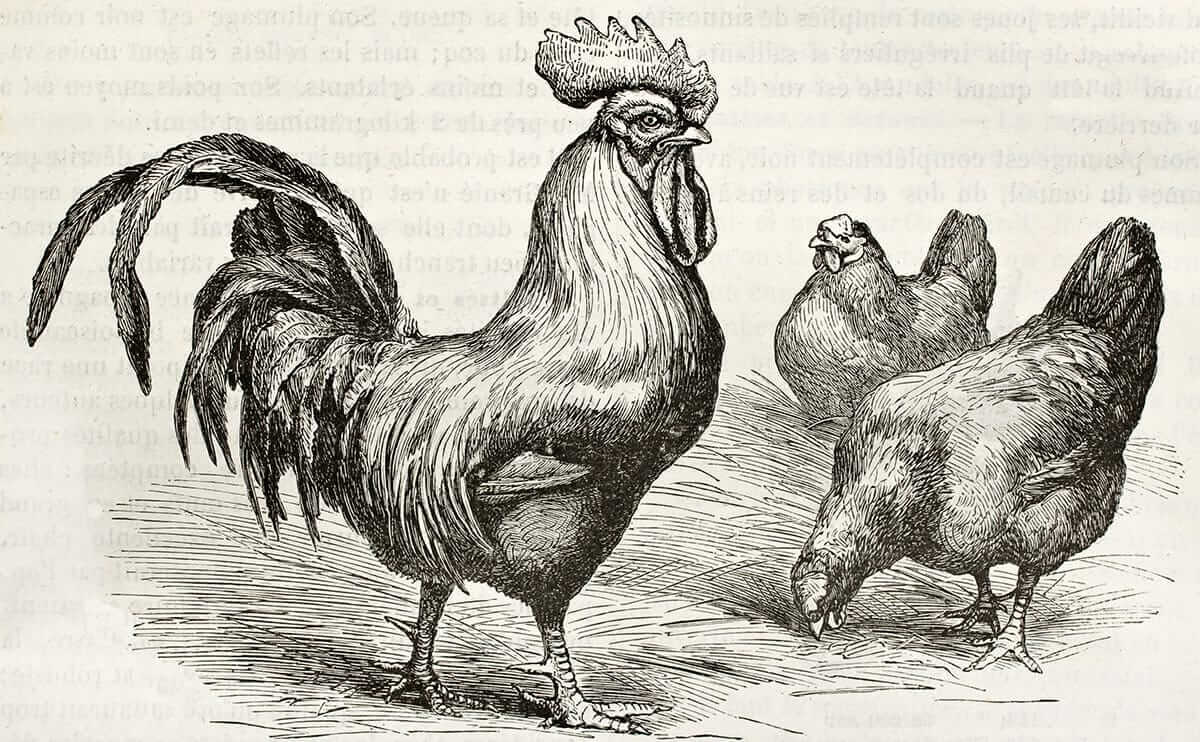Everything old is new again, with farmers and eaters rediscovering heritage breeds of chickens. Here's how to cook a chicken that actually tastes like chicken.

Heritage-breed chickens are defined by The Livestock Conservancy as breeds with four characteristics: they were recognized as an American Poultry Association Standard Breed prior to the mid-20th century, they are naturally mating, they can live a long and productive life outdoors and they have a slow growth rate — meaning they reach market weight in no less than 16 weeks. These are different than industrial-breed chickens ”“ the kind you typically find at a grocery store or restaurant ”“ in price, form, conformation and genetics.
They’ll also likely cost quite a bit more than your normal bird ”“ expect to pay anywhere from $5.50 to $10.50 per pound for your heritage chicken ”“ but many cooks and eaters swear by their flavor. Heritage birds also look a bit different, as Americans’ obsession with huge chicken breasts is a relatively recent phenomena. Expect, instead, to see longer-bodied chickens with smaller breast-meat portions and darker dark-meat portions.
Heritage chickens aren’t typically sold in a grocery store, so you might have to do some research to find them in your area. Look at the farmers market, at the co-op, or online at The Livestock Conservancy’s directory, EatWild.com, LocalHarvest.com or Heritage Foods USA.
[mf_h5 align=”left” transform=”uppercase”]A Breed for the Table[/mf_h5]
Heritage-breed chickens were developed for different purposes and climates ”“ some strictly for eggs or strictly for meat, and others for dual purpose, meaning both eggs and meat; some for cold weather, and others for tropical climates ”“ so you won’t find every heritage breed in every locale. Depending on where you live, you might be able to find some of the following breeds of heritage meat birds for your home use:
Brahma: 8- to 10-pound market weight; found in cold climates; was considered the best meat chicken from mid-1850s through early 1900s
Buckeye: 5.5- to 8-pound market weight with meaty thighs; developed in Ohio
Catalana: 5- to 6.5-pound market weight; known for succulent meat; warm-climate bird
Plymouth Rock: Fast-growing; 6- to 8-pound market weight; cold-hardy bird; foundation breed for industrial-chicken production
Orpington: 7- to 8-pound market weight; slow-growing chicken; excellent for cooking at any age
Delaware: Fast-growing; 5.5- to 7.5-pound market weight; flavorful when eaten at any age
Wyandotte: 5.5- to 7.5-pound market weight; fast maturing; cold-climate bird
Sussex: 6- to 7.5-pound market weight; known for flavorful meat
Cornish: 6.5- to 8.5-pound market weight; very muscular; young birds eaten as Cornish Game Hens; foundation breed for industrial-chicken production
Rhode Island Red: 5.5- to 7.5-pound market weight; flavorful meat; hardy in all climates
Dorking: 6- to 8-pound market weight; cold hardy; tender and delicate, especially white meat
Langshan: Slow-growing birds; 6.5- to 8-pound market weight; abundant white meat
[mf_h5 align=”left” transform=”uppercase”]In The Kitchen[/mf_h5]
When you get a heritage-breed chicken home, don’t cook it like it’s any ol’ bird. Here are five cooking tips:
1. Make sure you’ve selected a bird of the proper age for your desired dish. Get a younger bird, which will have more tender meat, as a fryer; an older bird as a roasting or stewing chicken.
For example, the French dish coq au vin literally translates to cock (rooster) with wine. It’s considered a peasant’s dish, because this method of cooking is designed to break down tougher ”“ and therefore less desirable ”“ meat. An older bird can be marinated and cooked slowly with moisture to produce tender results.
2. A Dutch oven is an excellent tool for roasting a heritage-breed chicken. The large, heavy, lidded pot is designed to retain moisture over long periods of oven cooking. Place the chicken, breast-side down to keep it moist, in the Dutch oven with quartered onions, garlic cloves, a cup of water and some butter. Roast it for 30 minutes per pound at 325 degrees F.
3. Use fat. Coat your chicken in oil or butter – try coconut ghee – to create a crisp skin, and cook it in a rotisserie oven with water in the bottom pan to produce steam to keep the meat moist. Leave it on the rotisserie at a medium to low temperature for 20 to 30 minutes per pound.
4. Stew on it. Heritage birds, particularly older birds, make excellent stewing chickens. Put a whole or cut-up chicken in a pot, add enough water to cover, and simmer on low heat for about one hour per pound. Try this in a slow cooker, too, on low. Do not allow the water to boil. As it cooks, the meat will fall off the bone, ready to be used in soups, casseroles and other recipes. Strain the resulting stock for all manner of use, as well.
5. Low and slow wins the day. Experiment using heritage-breed chicken in your own recipes, but always cook it slowly, at a low temperature, with plenty of moisture. Like you should all meats, don’t cut into it right away; let the heritage chicken rest for 10 or so minutes after cooking so the juiciness is sealed into the tender meat.
These old-school breeds can be a hit in the kitchen with a little attention to the intricacies of cooking a different kind of chicken meat.